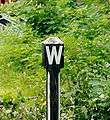Catskill Mountain Railroad
| Catskill Mountain Railroad | |
|---|---|
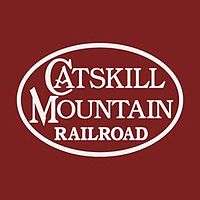 | |
| Terminus |
Section 1: Boiceville-Phoenicia, New York Section 2: Kingston, New York-Ulster, New York |
| Commercial operations | |
| Built by | Ulster & Delaware Railroad |
| Original gauge | 4 ft 8 1⁄2 in (1,435 mm) |
| Preserved operations | |
| Owned by | Ulster County, New York |
| Operated by | Catskill Mountain Railroad |
| Reporting mark | CMRR |
| Preserved gauge | 4 ft 8 1⁄2 in (1,435 mm) |
| Commercial history | |
| Opened | December 12, 1872 |
| Closed | 1976 |
| Preservation history | |
| 1982 | CMRR begins operations |
| May 31, 2016 | CMRR ceases operations |
| Headquarters | Kingston, New York |
| Website | |
| catskillmtrailroad.com/ | |
The Catskill Mountain Railroad (reporting mark CMRR), is a heritage tourist railroad based in Kingston, New York, that began operations in 1982. While freight service was no longer offered, regular passenger excursions were operated on two sections of track separated by three washouts as a result of severe flooding. The railroad leased the former New York Central Railroad Catskill Mountain branch from Kingston to Highmount, New York, where it connected with the Delaware & Ulster Railroad (D&U). The railroad connected the Hudson Valley with the Catskill Mountains of New York State. The corridor was purchased by Ulster County in 1979 from the estate of Penn Central and subsequently leased to Catskill Mountain Railroad in 1982. The CMRR's lease with Ulster County expired on May 31, 2016 and the railroad ceased operations on that date.
On August 6, 2016, the CMRR resumed operations under a new permit agreement with Ulster county for two portions of the Catskill Mountain Branch in Ulster County.
History
Commercial History
The Ulster & Delaware Railroad was chartered in 1866, and was completed between Kingston and Stamford, NY on December 12, 1872, and extended to Oneonta in 1900. Generations of travelers flocked to the Catskills to vacation at the storied grand hotels and lodges. Lucrative freight traffic included coal, lumber, dairy and farm products. Passenger traffic diminished during the Great Depression. Improved roads and the rise of the private automobile doomed the line, which became the Catskill Mountain Branch of the New York Central system (NYC) on February 1, 1932. The line was cut back from Oneonta to Bloomville in 1965. ending the railroad's role as a through route.
NYC merged with the Pennsylvania Railroad in 1968 to form Penn Central (PC), and conditions continued to deteriorate. PC was bankrupt by 1970; the U.S. government ultimately created Conrail in 1976 to aid the seven bankrupt Eastern railroads at the time. Operations along the Catskill Mountain line were subsidized by the State of New York, with operations occurring on an as-needed basis. The six-month subsidy gave the remaining customers on the line time to switch to alternate modes of transportation.
The last freight train departed Kingston for Stamford on September 28, 1976 and finally returned to Kingston on October 2, 1976.
Rebirth as two Tourist Railroads
The first efforts to preserve the railroad began in September 1973, with the formation of the Catskill Mountain Transportation Corporation, a grassroots organization seeking to purchase the railroad from PC. However, an agreement on price could not be reached. Earl Pardini was President of the CMTC, and ironically was the brakeman on the last freight train. He had joined Conrail earlier in 1976.
Conservationists campaigned to preserve the railroad, led by noted transportation attorney Donald L. Pevsner, who enlisted the help of The Catskill Central for Conservation and Development (starting in 1974) and of his long-time friend, author William F. Buckley, Jr., who toured the line in 1977 to help draw publicity.
Delaware County residents succeeded in convincing the A. Lindsay and Olive B. O'Connor Fouindation, of Hobart, NY, to purchase the railroad from the Penn Central estate, in 1980. This foundation then deeded the Highmount-Bloomville segment to the seven Towns in Delaware and Schoharie Counties through which it passed. The section between Highmount and Roxbury, New York would become the Delaware & Ulster Railroad (D&U). It is now owned by the nonprofit Catskill Revitalization Corporation.
In 1979, Ulster County purchased the 38.6-mile segment from Kingston to the county line near Highmount, which was to become the Catskill Mountain Railroad.
Catskill Mountain Railroad
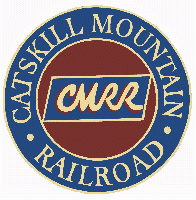
In 1982, Ulster County leased its portion of the line to the new Catskill Mountain Railroad (CMRR). On August 9, 1982, CMRR initially began operations in Phoenicia, using track cars and trailers to haul tourists and tubers three miles along Esopus Creek to Mt. Pleasant station. The railroad was incorporated on March 7, 1983 as a for-profit railroad corporation in the state of New York.
In 1984, the Empire State Railway Museum (ESRM) relocated back to New York State and made its home in the Phoenicia depot. The ESRM Joined the CMRR with the intended goal of reopening the line from Kingston to Phoenicia. Many volunteers came on board to help with various tasks, from brush-cutting to track maintenance to train operations.
In 1985, the CMRR began running full-sized equipment consisting of CMRR No.1, "The Duck", a flat car and caboose. Earl Pardini became President to help guide them through the transition. Pardini was with the D&U at its startup, helping to train its engineers and conductors. He agreed to come aboard, and the CMRR embarked on a period of serious expansion.
In 1986, Ulster County reconnected the line with Conrail at Kingston. The railroad purchased a variety of second-hand locomotives, coaches and freight cars which were shipped by rail to Kingston. Some of the equipment was refurbished and used immediately, while the rest sat in storage until needed. Also in 1986, the CMRR signed its first multi-year lease with Ulster County, for five years, and began switching freight for the Kingston Recycling Center.
In 1987, a devastating flood washed out Campground Curve, between Phoenicia and Mt. Tremper. In conjunction with NYSDOT and Ulster County, this damage was repaired and service restored in 1988. Operations focused on Phoenicia to Mt. Tremper, with limited operations in Kingston.
Expansion and Setbacks 1991-2005
The railroad entered into a 25-year lease with Ulster County in 1991. Railroad operations ended at busy Route 28 in Mt. Pleasant. The crossing had been out of service for many years, and the railroad needed to replace it if it was to continue east toward Kingston. The project received approval and after about ten years, public funding was provided to complete reconstruction of the crossing and installation of warning lights and gates. The new crossing was put into service in October 2004, offering the railroad its first significant expansion.
Then tragedy struck CMRR. On April 1, 2005, a devastating flood nearly wiped out the railroad, and caused much damage to the tracks and equipment in Phoenicia. After several weeks of volunteer effort, the line was reopened in summer 2005. Around this time, interest increased in using some segments of the rail corridor in Ulster County for a recreational trail.
Volunteer Resurgence
During the winter of 2006, the railroad reorganized its efforts as new volunteers came forward. A group from the nearby Ulster & Delaware Railroad Historical Society were among the first to offer assistance. Brush-cutting and clearing the right of way took first priority. A high-profile activity with immediate results, the cleanup effort motivated more volunteers to join. By the end of 2006, the volunteer force had increased to 45 full members and 30 provisional members. They cleared nearly 20 miles of brush from the mainline.
Kingston Operations Resume
In 2007 the railroad began track repairs in Kingston in line with the "ski lift" concept recommended in the ALTA Engineering study for railroad operation from Kingston to West Hurley. The railroad restored tracks in Kingston, with service opening to Washington Avenue in December 2008. In late 2009, the railroad opened more track west of Washington Avenue and offered additional seasonal service throughout that year. From 2007 to 2009, close to two miles of track had been rebuilt in Kingston, from Cornell Street to the foot of Bridge C9.
For three years, the CMRR worked to complete the rehabilitation of Bridge C9 over Esopus Creek in Kingston. The bridge was opened for service on December 7, 2012, enabling track rehabilitation westward with Route 209 being the first destination. Route 209, MP 5.42, was reached on September 21, 2013, and Hurley Mountain Road, MP 5.94, was reached on November 16, 2014. The track is now open to MP 6.45 west of Hurley Mountain Road. The first passenger train to Route 209 ran on October 19, 2013, and the first to Hurley Mountain Road on November 21, 2014.
West End Expansion
Through 2007 and 2008, work also continued on opening the .6 mile Cold Brook Extension. The first train arrived at Cold Brook Station on July 4, 2008: the first regularly scheduled passenger train to arrive at the station since 1954. Because Cold Brook station remains privately owned, the railroad maintained no agency there and there are no facilities to board or discharge passengers. In 2009, the CMRR repaired track another .8 miles to the Boiceville Bridge at MP 21.3, for work trains only.
By 2010, the physical limit of track restoration was reached on the "western" end of the operable railroad. To the west of Bridge Street in Phoenicia is a major washout preventing any serious restoration work without outside funding. To the east, the railroad rebuilt tracks up to the limit of Bridge C30 (Boiceville Trestle). This was a total of 6.4 miles of operable track at its greatest extent.

Hurricane Irene
On August 28, 2011, CMRR was devastated by flooding as a result of Hurricane Irene. Flood waters inundated the yard at Phoenicia, scouring the right of way and threatening the depot. A significant washout occurred at Campground Curve, similar to the one in 1987. All operating equipment had been moved to safe ground at Mt. Tremper, east of Campground Curve. Additional damage had been incurred where damage from a previous washout was already underway. In the non-operating segment east of Cold Brook station, the most significant damage was the loss of three of the four spans of Boiceville Trestle (Bridge C30) to rising flood waters. There was no significant damage to the restored tracks in the Kingston area.
The CMRR resumed operations on September 10, 2011, on a shortened length of track near Mount Tremper. The washout at Campground Curve was repaired in late 2011, except for reinstallation of track. Operations west of Mt. Tremper commenced on August 5, 2012.[1] In November 2012, the County informed the CMRR that several repair projects had been approved by FEMA. Seven projects, including restoration of the Boiceville Trestle, were approved for $2.3 million. However, the County informed CMRR that it would not begin the projects unless CMRR agreed to terminate its lease from Kingston to the Ashokan Reservoir.
On August 3, 2013, the CMRR started reconstruction work of track on Campground Curve as part of returning to Phoenicia. This was done assuming that the County would not initiate a FEMA-funded project for this repair. The CMRR completed repairs to Phoenicia on August 7, 2015.
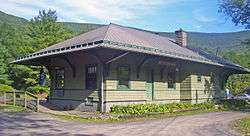
At the end of its lease with Ulster County, the CMRR ran from Phoenicia at MP 27.5 to the washout at MP 23.3, as the FEMA funds were never released for the trestle and washout repairs.
U&D Corridor Transitions
On January 24, 2006, when the Kingston Daily Freeman announced "Trail Plan Could Mark End of Line for Railroad", trail advocates began promoting a plan to convert segments of the county-owned railroad corridor into a recreational path, which would limit the length and location of the tourist train excursions. ALTA Engineering was hired to devise a rail-with-trail plan for the line in Ulster County. The final report stated the following:
"The future vision of the Ulster & Delaware Rail + Trail is a significant opportunity for local communities, Ulster County, and the region. The combination of two historic tourist railroads, the trolley and railroad museums, restored historic sites, and a trail for multiple uses will complement the tourism and recreation economy of the Catskill Mountain Region. The project can become a model of sustainable transportation and cooperation between a wide range of public, private, and nonprofit partners."
On October 4, 2012, Ulster County Executive Michael P. Hein announced in his 2013 budget a plan to remove 32 miles of rails in Ulster County to be replaced by a trail, leaving the Phoenicia-Cold Brook segment, and ending Kingston operations. He planned to start removing rails in 2013, using $642,000 in scrapping revenues to provide revenue for his budget. The budget was adopted by the Ulster County Legislature on December 4, 2012. The CMRR's lease, however, remains in effect until May 31, 2016.[3] There is no reference to scrapping the railroad in the proposed 2014 Ulster County Budget.
Three days after the 2013 budget was approved, the CMRR opened Bridge C9 in Kingston for passenger train service, and began bringing passengers across the bridge for the first time in over 50 years.
On February 19, 2013, CMRR published a rail-with-trail study for MP 3 to 11 in response to a request from the County made on October 15, 2012. The rail-with-trail plan was rejected without review by the county on March 7, 2013.
On June 5, 2013, Ulster County hired Andrea C. Ferster, Esq, who was also general counsel to the Rails to Trails Conservancy, to file an application to the Surface Transportation Board to "rail bank" the railroad for future trail use.
On June 12, 2013, CMRR was served with a Notice to Cure. In a meeting with the Ulster County Executive, held on June 24, 2013, the CMRR was asked to vacate the line from Kingston to the Ashokan reservoir, and told that unless it complied, its lease would be terminated on July 12. CMRR filed a Yellowstone Injunction on July 9 and was granted a TRO prohibiting the county from terminating the lease pending the outcome of a court decision on August 6. The Yellowstone Injunction was granted on November 6, 2013. Ulster County issued a notice of appeal on December 17, 2013.
On December 11, 2013, the outgoing New York City DEP commissioner announced a plan to support a trail along the U&D right of way from MP 10 to MP 21.6.
On December 8, 2014, the Ulster County Executive announced that, assuming certain requirements were met, a little more than two miles of tourist passenger train service could remain in Kingston, from the eastern end of Kingston Plaza, MP 3.6, to Hurley Mountain Road, MP 5.94.
On April 19, 2015, the Ulster County Legislature passed a resolution to create a nine-member legislator only committee to study the entire U&D corridor in Ulster County and make recommendations on long term use, including rail, trail or rail with trail with recommendations due by November 30, 2015.[4]
On May 15, 2015, the Ulster County Legislature passed a resolution to sign a Memorandum of Agreement with the New York City Department of Environmental Protection to begin spending planning dollars on a future conversion of the 11.5 mile railroad easement owned by the County in the Ashokan Reservoir to trail use.[5]
On December 15, 2015, Stone Consulting completed a report on the Highest and Best uses of the U&D Corridor.[6]
On December 15, 2015, the Ulster County Legislature passed a resolution making rail with trail the official policy from Chandler Drive (MP 3.58) in Kingston to just past 28a in Stony Hollow (MP 8.33), allowing the railroad to continue operations in Kingston and for 4.75 miles west. The segment from 28a to MP 10 will be studied further "provided that trail connectivity co-located on the corridor shall be preserved". This gives the CMRR a potential long-term home in Kingston and could allow the railroad to expand west as far as MP 10. It also confirmed that rail will remain from the Route 28a bridge in Boiceville (MP 21.6) to Phoenicia (MP 27.9). Any further rail expansion along the north side of the Ashokan Reservoir would be dependent on consent from the NYCDEP and the Ulster County Legislature. The Stone Consulting report found there were no physical restrictions to rail alongside trail from MP 10 to 11, with the only restriction to rail use being imposed by the agreement between Ulster County and NYCDEP.[6] This resolution effectively ends the fight on rail vs. trail on the former U&D corridor, with rail and trail proponents pledging to work together from now on.
On April 19, 2016, the County and the CMRR settled their lawsuit contingent on the CMRR vacating its yard at Cornell Street in Kingston on May 1, 2016, ceasing operations on May 31, 2016 (the end of its lease term), and removing its equipment from the railroad by July 30, 2016.
On July 18, 2016, the Ulster County Executive announced that permits had been signed for the CMRR to continue operating in Kingston from MP 3.6 to 8.33 until December 31, 2020, and from MP 23.3 to 27.8 until October 31, 2016. The permits were issued on August 4, 2016, and service resumed on August 6, 2016.
Operations
Phoenicia-Cold Brook
The CMRR operated a tourist excursion train from Phoenicia Railroad Station, Phoenicia, MP 27.5 to Cold Brook Railroad Station, MP 22.1. Its trains originated from the former U&D station in Phoenicia, which is also home to the Empire State Railway Museum. Passengers boarded trains at Phoenicia or Mount Tremper Railroad Station, MP 25.2.
Initially, service was provided by track cars hauling trailers between Phoenicia and Mount Tremper. Realizing that the future lies in conventional railroad equipment hauled by locomotives, two flatcars were rebuilt as open air bench cars to accommodate passengers. A Porter 50-ton switcher was enlisted to haul the expanded consist. A 1922-vintage wooden caboose often (ex-D&H 35952) brought up the rear, and offered additional capacity.
In early 2004 the caboose was taken out of service and replaced with a restored coach of Lackawanna heritage. This coach greatly increased the capacity of each train, and also helped offer "all-weather" service. In late 2004, service was extended to MP 22.7. It was extended further to Cold Brook Station, MP 22.1, on July 4, 2008.
On May 6, 2010, Phoenicia operations acquired a new locomotive, former LIRR/SIRY Alco S1 407, which was placed in service on May 7, 2010. It has been the workhorse engine for Phoenicia operations since the start of the 2010 season. A second coach was put into service on October 2, 2010, just in time for the Fall Foliage trains.
In 2011, construction of a new switch and siding began at MP 24.75, to park maintenance equipment and give the work train a place to alight. It was completed on May 25, 2012.
For the 2012 season, the train ran initially from Mt. Tremper west to MP 23.3 where subgrade repairs are necessary due to Hurricane Irene. On August 5, 2012, after repairs were made at MP 25.5, the passenger train began running west to the next damaged section at MP 25.8, one half mile west of Mt. Tremper. On August 6, 2015, service was restored to Phoenicia Station after extensive track repairs were completed by the CMRR.
Work trains generally consisted of transfer caboose 697 (ex-CR 18015) and "The Duck," a small Davenport switcher. Equipment restoration and maintenance takes place at the railroad's open-air facilities. The original Phoenicia section house is used by the railroad to store tools and supplies for the track crew.
On August 4, 2016, CMRR was granted a permit to resume operations on this segment of the U&D Corridor through October 31, 2016. However, the County has elected to use a rail bike (www.railexplorers.net) company as the operator for this segment starting in 2017. The CMRR must remove all its equipment by December 15, 2016. With the removal of full-sized equipment, this will effectively eliminate tourist train operations on this segment of the corridor permanently.
Kingston-West Hurley
CMRR also had a yard in Kingston, referred to as "Cornell Street Yard." In 2009, a new siding was constructed to expand the yard facilities to allow for the storage and restoration of passenger cars for expanded tourist train operations. The CMRR was forced to vacate the yard by the County on May 1, 2016.
Since November 2006, volunteers have re-opened track in Kingston. The passenger operable section stretches from Cornell Street (MP 3.0) to past Hurley Mountain Road (MP 6.45).. Work trains access the line to MP 11 at the Glenford Dike at the Ashokan Reservoir.
On December 6, 2008, the railroad inaugurated seasonal tourist runs between Downs Street (MP 3.2) and Washington Avenue (MP 4.37). A small ticket office and loading platform was constructed off Westbrook Lane (MP 3.78) opposite Kingston Plaza to support passenger operations in 2008. Trains are powered by Alco RS-1 401 (ex-GMRC 401), and consist of converted flatcar 278 (ex-LBR 26) and refurbished caboose 675 (ex-PRR 477672). The critical Washington Avenue crossing was reopened for limited use in 2008, and the track was opened to Bridge C-9 (MP 5) on November 15, 2009 for the 2009 Kingston Holiday Train. Repairs to Bridge C9 started in September 2011, and were completed on December 3, 2012. The bridge was certified on December 7, 2012, and the first passenger train ran across the bridge on December 8. On September 21, 2013, CMRR workers completed track rehabilitation up to NYS Route 209 (MP 5.42). The next day, work began on the next extension past 209 to Hurley Mountain Road (MP 5.94). In late 2014 track was expanded to MP 6.13, and in late 2015 to MP 6.45, over 1/2 mile west of Hurley Mountain Road.
In April 2016, the line was reopened for work trains to MP 11 on the Glenford Dike at the Ashokan Reservoir.
Shokan
CMRR's third base of operations was at MP 16.4 at Shokan, New York, at the site of the former Ashokan Railroad Station. The operating equipment there consisted of a self-powered crane, flat car, and an ex-Susquehanna caboose (privately owned). Shokan also served as a base for the CMRR's track car crews, who were charged with maintenance of the section of the line inaccessible to full sized equipment, from MP 11 to bridge C30 at MP 21.3. The CMRR removed all its equipment in Shokan by rail on July 21, 2016.
Long-term goals
Kingston-Phoenicia
The CMRR's long-term goal is to run tourist trains on the entire 25-mile run from Kingston to Phoenicia, which will include lengthy views of the scenic Ashokan Reservoir, and a stop at Ashokan Railroad Station. Track rehabilitation has until recently stopped at two bridges - Bridge C9 at MP 5 and Bridge C30 at MP 21.3.
With the recent restoration of Bridge C9 to service by the CMRR in late 2012, track restoration has continued east up to West Hurley (MP 10.2) and beyond to the Glenford Dike at MP 11.
However, bridge C-30 (the "Boiceville Trestle") at MP 21.32 was washed away by Hurricane Irene on August 28, 2011. FEMA funding for its repair was approved in November, 2012, but until that repair is completed, no more track expansion east can be done. When C30 is restored, track rehabilitation will continue to Shokan (MP 16.2), where a new terminal for the railroad will be built.
Washouts at Butternut Cove (MP 18.6) also need to be repaired before the Phoenicia operation can be linked with the Kingston operation. Funding from the NYSDEC has been obtained by Ulster County for this repair.
The entire line from Phoenicia to Kingston is navigable by track cars and light maintenance equipment except for the Boiceville Bridge at MP 21.3 and the washout at MP 23.3.
West of Phoenicia
A major washout at Bridge C34 (MP 28.8) west of Phoenicia effectively severs the CMRR. Many washouts and landslides between this bridge and Shandaken (MP 33.5) need to be addressed before more damage occurs to the right of way. Bridge C42 over Lasher Road needs to be restored to its original location; it was removed and set aside after the end of Conrail service to allow for greater vertical clearances. Bridge C41 at MP 36.77 was removed by the County in 2013. Crews continue to cut brush and keep the tracks clear to the connection with the DURR at Highmount.
The DURR has also expressed interest in resuming service between Arkville and Highmount, and continuing south/east over the CMRR through the horse shoe curve at Pine Hill: possibly all the way to Big Indian (MP 36.4). With the recent developments in regards to the Bellayre Resort expansion, restoration of any track between bridge C34 west of Phoenicia and Shandaken (MP 33.5) appears to be an ever more likely possibility.
Interchange with CSX at Kingston
The CMRR has been isolated from the national network since Conrail removed its Kingston interchange switch in 1996. The CMRR plans to eventually reconnect its line to the national rail network: CSX (successor to Conrail) at Kingston.
Roster of equipment
Locomotives
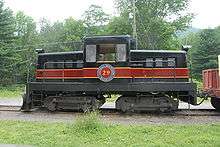
CMRR owns two American Locomotive Company (ALCO) RS-1 locomotives, No. 401 (Ex-Green Mountain Railroad (GMRC) No. 401, Ex Gulf, Mobile and Ohio Railroad (GM&O) No. 1052, Ex Illinois Terminal Railroad No. 1056, née 756); and No. 2361 (former Alter Scrap No. 2361, Ex-Soo Line Railroad (SOO) 2361). Only 401 is operational at this time. In 2010, 2361 was repainted and evaluated for reactivation; it was given a new number, 400.
In May 2010, the CMRR acquired its latest locomotive, former Long Island Railroad/Staten Island Railway Alco S-1 407. This engine is the workhorse for operations out of Mt. Tremper and Phoenicia.
CMRR No. 29, "The Goat" is an Ex-Navy 50 ton H. K. Porter, Inc locomotive, which is a backup engine and main engine for worktrain service. CMRR No. 1, "The Duck", another worktrain locomotive, is an Ex-Army 38 ton Davenport Locomotive Works locomotive. Both of these locomotives are operational and located currently in Phoenicia.
In 2014, the CMRR acquired a 1942 GE 45-tonner, numbered 42, from the Railroad Museum of New England. The locomotive is currently stored at the yard in Kingston.
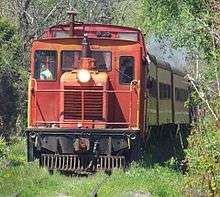
Passenger equipment
Phoenicia equipment consists of two Ex-Navy 50 foot flatcars, No. 271 an 272, that have been converted to open-air passenger service with the addition of side walls and benches, and two former Erie Lackawanna Railway (EL) Multiple unit (MU) trailers that have been completely renovated: No. 4321 entered service as CMRR No. 701 in 2004, and No. 4332 entered service on October 2, 2010 as CMRR No. 702. Another MU trailer, No. 4322, has recently been moved from storage at Kingston for restoration back to active service. It will most likely be numbered as CMRR No. 703 upon completion.
Kingston equipment consists of two flat cars, one 40-foot, CMRR No. 278 (ex-Lowville & Beaver River No. 26), and another 50-foot (ex-Army No. 35112), which are each fitted with a canopy roof, four former Long Island Rail Road commuter coaches, CMRR 2940, 2949, 2962, and 2911, and an N5B Caboose, CMRR No. 675 (Ex-PRR 477672, PC 22800, CR 20003). The CMRR recently required Ontario Northern 832 (former Norfolk & Western No. 1727) and is renovating the car for first class service.
Another U.S. Army 50 foot flatcar is being converted to passenger use. No. 35111, which is stored in Phoencia.
Other equipment
CMRR also rosters several pieces of freight equipment used in work train and storage service. In Kingston, this includes two 50-foot boxcars, former D&H 26076 and NYC 72462, used for storage. An ex-Army Difco dump car and 40-foot flat car (CMRR 201 (Ex LBR No. 27)) are used for work train service. Additionally, the railroad has in storage west of Kingston a ballast hopper (former NYC No. 51467) and a gondola (former PRR No. 518399).
In Shokan, there is a self-powered ex-Navy crane, CMRR 991, a 40-foot tender flat CMRR 291 (ex-Army 35305), and a privately owned caboose CMRR 674 (ex Susquehanna 117), all used for work train service. The frame and trucks of former LS&I caboose No. 6, which were bought by a CMRR volunteer in the 1980s, are in storage at Shokan.
In Phoenicia, a 40-foot box car (Ex-LV 65100) is used for storage, and a former Army Difco dump car, a 40-foot flatcar, CMRR 202 (Ex-CV 7704) and an N6A transfer caboose, CMRR 697 (Ex NYC/PC/CR 18015), are used for worktrain service. Phoenicia equipment also includes a privately owned N5G steel caboose, CMRR 673 (former Lehigh Valley 95041). This caboose was used as a gift shop at Mt. Tremper for many years before it was returned to the rails in 2010.
Photo gallery
-

No. 29 in action
-

Car No. 701
-

Car No. 271
-

Phoenicia Station NRHP marker
-
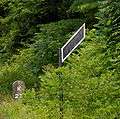
Flanger Sign
-

Mile marker
-

Mount Pleasant station
-
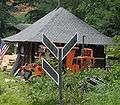
Flanger Sign
-

Yard limit marker
-

Kingston Holiday Shuttle at Westbrook Station
-

Kingston Holiday Shuttle at Washington Avenue
See also
References
- ↑ Bosch, Adam (September 19, 2011). "Ulster tourist train rolling on". Times-Herald Record. Retrieved September 19, 2011.
- ↑ "Ulster and Delaware Railroad Corridor, U&D Rail + Trail, Trail Feasibility Study, Final Report" (PDF). Alta Planning and Design. July 2006. Retrieved December 31, 2015.
- ↑ "Planner's Memorandum, Catskill Mountain Railroad Corridor, Why Trail is the Right Choice" (PDF). Ulster County Planning Department. April 2013. Retrieved December 31, 2015.
- ↑ "More talk, more time, more money devoted to Ulster County Trail Issue". Daily Freeman. April 22, 2015. Retrieved December 31, 2015.
- ↑ Reischel, Julia (May 21, 2015). "Ulster legislature OKs deal with DEP to build trail". Watershed Post. Retrieved December 31, 2015.
- 1 2 "County of Ulster, NY, Highest and Best Use Recommendations, U&D Railroad Corridor". Stone Consulting and Design, P.C. December 2015. Retrieved December 31, 2015.
- ↑ http://ulstercountyny.gov/news/executive-press-releases/catskill-mountain-railroad-signs-multi-year-permit-ulster-county
- ↑ "Ulster County lawmakers amend trail policy to allow tourist trains". Daily Freeman. December 15, 2015. Retrieved December 31, 2015.
External links
- Catskill Mountain Railroad Company
- Save the Rails
- Ulster County Resolution 488 Dated December 15, 2015
- Stone Consulting Report Dated December 15, 2015
- CMRR Kingston to Glenford Dike 2015-2020 Business Plan
- CMRR 2013 Timetable
- CMRR Rail with Trail Study
- CMRR 2012 Annual Progress Report
- CMRR 2011 Annual Progress Report
- CMRR 2010 Annual Progress Report
- CMRR 2009 Annual Progress Report
- CMRR 2008 Annual Progress Report
- Comprehensive CMRR Equipment Roster
- Delaware and Ulster Railroad
- Empire State Railway Museum
- Trolley Museum of New York (Kingston)
- Ulster & Delaware Railroad Historical Society
Coordinates: 41°56′07″N 74°00′54″W / 41.935354°N 74.015094°W
